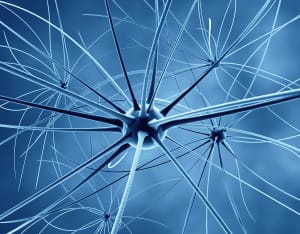Shining laser lights on a certain part of the brain in rats can eliminate compulsive cocaine seeking, according to a study published in Nature. Testing of a similar approach in humans may begin soon, although it will most likely involve electromagnetic stimulation from outside the scalp rather than direct stimulation of the brain by lasers. The study was a collaboration between researchers at the Ernest Gallo Clinic and Research Center at the University of California at San Francisco (UCSF) and the National Institutes of Health (NIH). By focusing lasers on the prelimbic region of the prefrontal cortex, the researchers were not only able to eliminate addictive behavior in rats, but also able to stimulate compulsive cocaine seeking in rats that were not previously addicted. Using genetic engineering, the researchers were able to insert light-sensitive proteins into neurons in the prefrontal cortex of each rat. The addition of these proteins, known as rhodopsins, allowed the researchers to switch the neurons on and off with laser lights. When the nerve cells were switched on, compulsive drug seeking in addicted rats vanished, while turning them off transformed non-addicted rats into compulsive cocaine users.
Rats Are Useful Models for Human Cocaine Addiction
Previous studies of the electrophysiology in rats addicted to cocaine have found that these rats show significantly reduced activity in the prefrontal cortex region of the brain. These results suggested to the UCSF and NIH researchers that using brain stimulation techniques to reactivate neurons in this area of the brain could reduce drug-seeking activity in rats. Rats make good models for research on cocaine addiction because they a show similar kind of compulsive drug seeking. Like humans addicted to cocaine, rats will continue to use the drug compulsively even when they know that it will be harmful to them. The fact that they show similar addictive behaviors encourages the researchers to believe that brain stimulation could have like results in people.
Future Research Will Test TMS for Similar Results in Humans
Not only did this approach show impressive results in rats, but there is also a technique that can produce similar neuron activation and deactivation in humans without the use of lasers. A kind of electromagnetic stimulation called transcranial magnetic stimulation (TMS) is already used as a treatment for severe depression that has not been responsive to other treatment approaches. It is the least invasive of various brain stimulation procedures, and serious side effects have so far been found to be rare. Dr. Antonello Bonci, one of the authors of the new study, plans to begin clinical trials at the NIH to evaluate TMS as a treatment for compulsive drug seeking in humans addicted to cocaine. The NIH researchers will use the procedure to see if they can reactivate neurons in the prefrontal cortex of the brain and wipe away cocaine addiction in humans.
Serious Consequences of Cocaine Use
Approximately 1.9 million people in the United States are current cocaine users, and around 1.4 million users meet the criteria for dependence or addiction. Abuse of the drug leads to around 482,188 emergency room visits each year. Serious medical complications are associated with cocaine use, including heart arrhythmia and heart attacks, strokes, seizures and coma. Cardiac arrest or seizure can lead to sudden death, even after only a single use of cocaine. Large amounts of cocaine can also cause erratic or violent behavior, anxiety, irritability, paranoia, tremors and vertigo.

